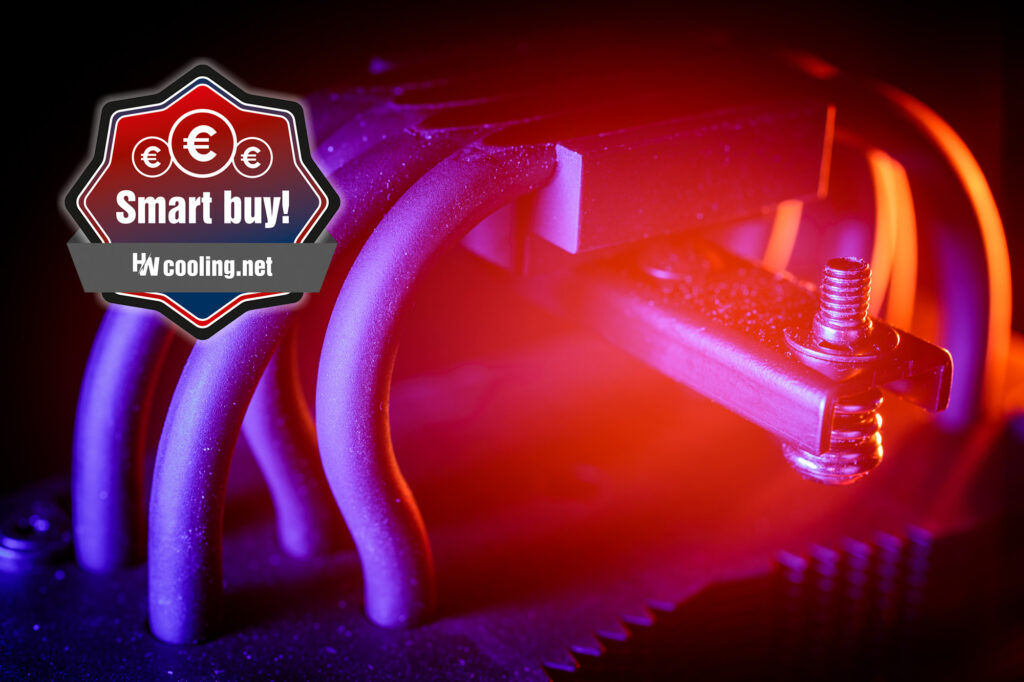Key features
The German company Arctic celebrates 23 years of its founding this year and to mark the occasion, new Liquid Freezer III AIO coolers were recently introduced. Today also sees the launch of new Arctic Freezer 36 air coolers. These coolers come with a number of bold innovations and one of them has led to some changes to the format of today’s review. Today, we’re going to take a look at the top model in this series with the A-RGB Black moniker.
Conclusion and evaluation
The Arctic Freezer 36 A-RGB Black cooler successfully builds on the traditional features of previous coolers in this series that offered very solid performance at a good price.
For an interesting price, which is now greatly improved by an ongoing discount, you get a very solid cooler with good efficiency that is not too noisy. As such, the cooler itself is quite quiet by objective measurement, but subjectively perceived sound performance could be better. This means that the sound performance of the fans could definitely do with some optimization. After all, this can be seen in the attached spectrograms, where several tonal peaks can be seen side by side.
It’s a rather bold move to stop supporting older Intel processor sockets, but it’s clear that Arctic had good reasons to do so, and the current mounting system for the Intel LGA 1700 socket strikes me as very good.
If I had to sum it up, you get a very solid product for your money that does its job well and you don’t have to dig too deep into your wallet for it. Moreover, with Arctic’s current anniversary promotion, this is an absolutely irresistible offer and so at the time of writing this review, the Smart Buy! award is an absolute must.
English translation and edit by Jozef Dudáš
| Arctic Freezer 36 A-RGB Black |
| + Solid efficiency |
| + Great price/performance ratio |
| + 0dB fan mode |
| + Six-year warranty |
| + Neat design |
| - Worse acoustic profile |
- Contents
- Key features
- Measurement methodology
- Results – 39 and 42 dBA
- Results – 45 dBA and maximum speed
- Spectral analysis of noise
- Conclusion and evaluation













I think the spectrum isn’t bad. It seems pretty favorable when compared to D15, MA824 and Dark Rock Pro Elite.
The spectrum page would benefit from a tool where you can switch between or even overlay multiple spectra together.
Hello and thanks for your comment.
As I stated in the review – objectively, the acoustic profile is actually rather good, but subjectively, the humming/fluttering sound coming from the fan is perceived worse than e.g. Endorfy Fluctus fans on Fera 5 Dual Fan, which was slightly louder, but more pleasant to the ears. Yes, we are splitting hairs here, but still 🙂
The results are surprising here. It’s basically the same as Endorfy Fera 5 Dual Fan. This doesn’t seem consisent with other reviews, which show it outperforming the Endorfy Fortis 5 Dual Fan (and that one outperforms Fera 5).
Do you think it outperforms the relatively new Fortis with 6 heat pipes? I doubt it.
Can you please cite some sources (those other reviews…) that support your claim? I would like to study their testing methodology and try to understand why this might be happening.
https://youtu.be/5TW_5W702dc?t=649 — here it has better result than Fortis 5
But then you are comparing coolers at maximum fan speed, in which case the Fortis 5 is quieter than the Arctic Freezer 36. Yes, for the price of higher noise, the cooling performance of the A36 can probably be a hair higher. Our results don’t contradict that.
Still, I find it odd that it just matches the Fera 5 in this test. It has a slightly bigger heatsink, and it comes with a contact frame, and the contact frame alone should put it ahead. Could it be because the Fluctus 120 fans that come with Fera 5 are much better than Arctic’s P12?
I wouldn’t say that one fan (Fluctus 120 PWM on the Fera 5) or the other (P12 ARGB on the Freezer 36) is significantly worse or better. The airflows at comparable noise levels are similar enough even on radiators that the level of psychoacoustic optimizations of both coolers will play a key role when it comes to cooling performance at comparable noise levels. Specifically, which of the fans will be quieter with “its heatsink” (from the Fera 5 or the Freezer 36) when achieving the same airflow.